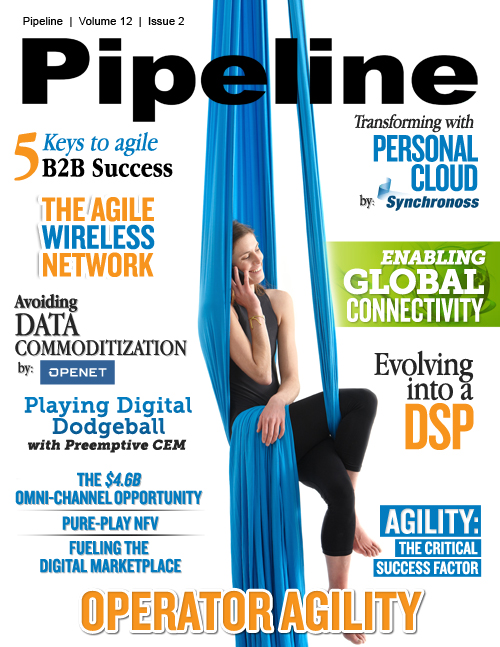The Path to Becoming an Agile Operator
Pervasive visibility
Without total visibility into networks, devices, and services, it’s very difficult to choose the right path. This becomes even more difficult when you figure in the prevalent third-party service landscape, migration to the cloud, and network virtualization.
Oracle Communications is one vendor that is focused on delivering full network visibility and combining it with Big Data and analytics capabilities to enable operators to be more agile. This is especially true since the company integrated Acme Packet and Tekelec product sets into its OSS/BSS portfolio. Doug Suriano, senior vice president and general manager of Oracle Communications, told Pipeline that the goal is to drive down new service roll-out timelines from “6 months to 6 days to 6 minutes.” Suriano explained that Oracle Communications is “very much focused on pulling the IT side of the business into the core network. Where we sit in the network, we have full visibility. Marrying the IT experience with the network is a killer combination.”
Other vendors that leverage their capabilities to offer pervasive visibility come from a DPI legacy, like NetScout and Fluke Networks, or a network equipment legacy, like Ericsson, Cisco, and Nokia Networks.
Leveraging the API
Two new ways of delivering communications services have emerged that exhibit great potential: communication APIs and WebRTC.
In contrast to application- or device-based communication, WebRTC is browser-based, and requires less development time, no specialized hardware, and no downloading on the client side. WebRTC is already being used for customer service in a variety of industries, including telecom. Agile operators will embrace WebRTC as they transform, either with in-house solutions or with partners like KANDY from GENBAND.
The API story is slightly different, although related to WebRTC. Essentially, by exposing communication APIs to the developer community, agile operators can dramatically increase their new service development and launch speed. They can even move into new areas, like digital lifestyle management. Comverse, for example, offers a mobile API gateway to serve as the bridge between devices or sensors and an IoT cloud. "This bypasses the usual problem service providers face, which is to build or buy an interface or app for each new device or service," says Mohan Palat, director of digital services for mobile operators at Comverse.
Business customers present another challenge that can handily be solved with APIs. The enterprise and SMB market is hot, and many CSPs are focusing their efforts on these customers. There’s only one problem: typical CSPs cannot keep up with business customers’ needs and demands. Take a ride-sharing company like Uber, for example. Uber activates tens of thousands of new numbers per month for its partner drivers in thousands of global locations. Simply put, typical telecom development times are way too protracted to serve the needs of cloud-generation businesses.
“SIP trunking takes provisioning time with a typical carrier,” says Venky Balasubramanian, co-founder of Plivo. “Our cloud-based API platform for voice and SMS transforms telecom into a business advantage for customers— it drives quality up and drives cost down. We reduce setup time for new customers from 6 months to 60 seconds.”





















